During my last analysis, I found interesting the set of historical data in the archive by ISTAT (Istituto Nazionale Italiano di Statistica), where all Italian statistics can be found. Namely, I looked at the number of deaths from respiratory diseases in the period 2008-2017. The data for the last two years (2018 & 2019) are not available.
I decided to analyze carefully these data and to post-process them in graphs and charts, for a better and faster understanding.
Number of deaths from respiratory diseases, Italy (2008-2017)
Figure 1 shows the evolution in the selected period. The number of deaths from respiratory diseases are divided into four main categories, depending on the specific root cause: flu (in orange), pneumonia (in green), chronic lower respiratory tract diseases (in yellow), other respiratory diseases (in grey). The sum of all these four categories represents the total number (in blue).
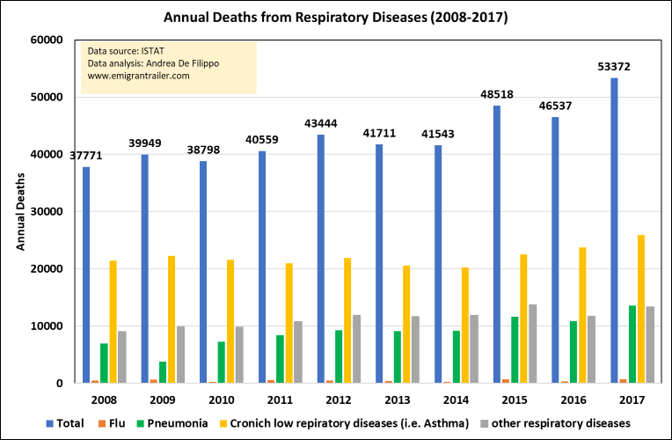
It can be observed a general increase of the overall number of deaths in the last ten years. In particular, starting from 2015, this increase shows a steeper slope. Without the data from 2018 and 2019, I cannot comment if this trend has continued until today. Instead, it is worth to underline that this increase is divided among all the four categories, but pneumonia shows the highest percentage value, with plus 95% cases between 2008 and 2017. Another important observation is that the chronic lower respiratory tract disease (i.e. asthma) account for almost 50% of the total.
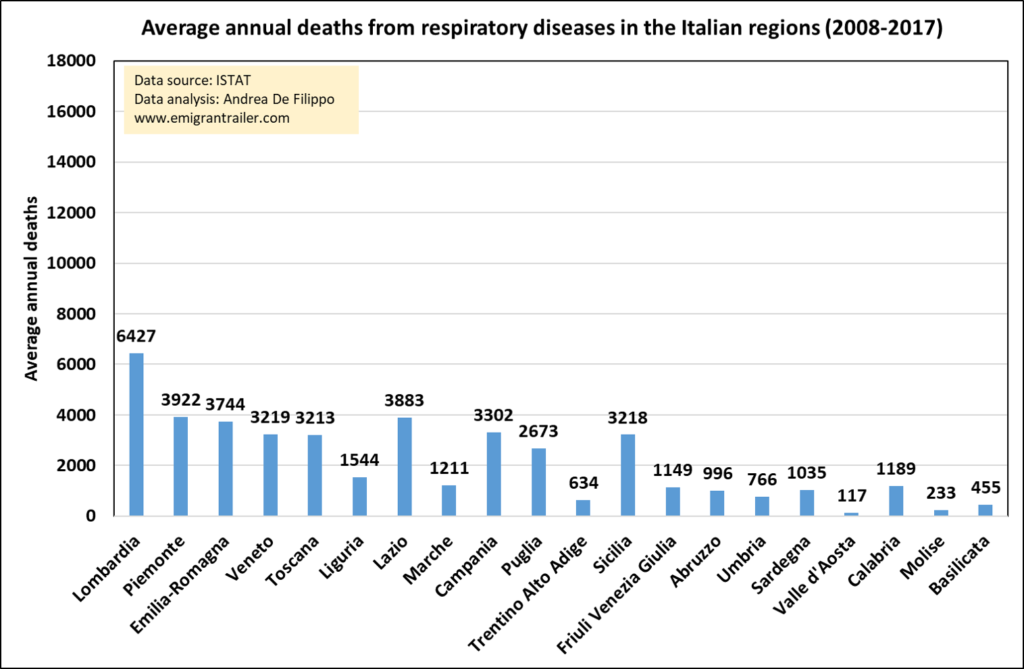
Population in the different italian regions
I deepened the analysis, searching and looking at the data from the different Italian region (see Figure 2), displaying the average annual value for the period 2008-2017.
Lombardy is the region that shows the highest values compared to all other Italian region. Piedmont, Lazio and Emilia Romagna show similar values, not far from each other. Same for Veneto, Tuscany, Campania and Sicily, but at lower values. The chart indicates that, apart from Lombardy, the number of deaths is uniformly distributed across the Italian territory with high values in the North-West (Piedmont), in the North-East (Veneto), in Center (Emilia Romagna, Tuscany and Lazio) and in the South (Campania, Sicily, Apulia).
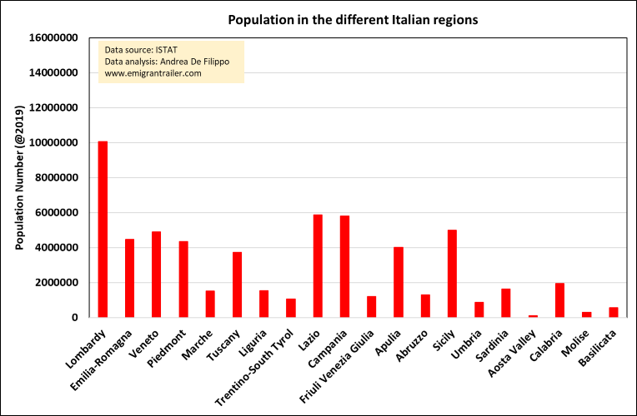
The chart in Figure 2 well correlates with the distribution of the population in Italy (see Figure 3). The only exception is the Veneto, a region with a higher number of inhabitants compared to Emilia Romagna and Piemonte, but with a lower number from respiratory diseases.
Comparison with current Covid-19 deaths
Following some recent discussions in Italy, I tried to match this data with the current available data regarding COVID-19, looking at the different Italian region (see Figure 4).
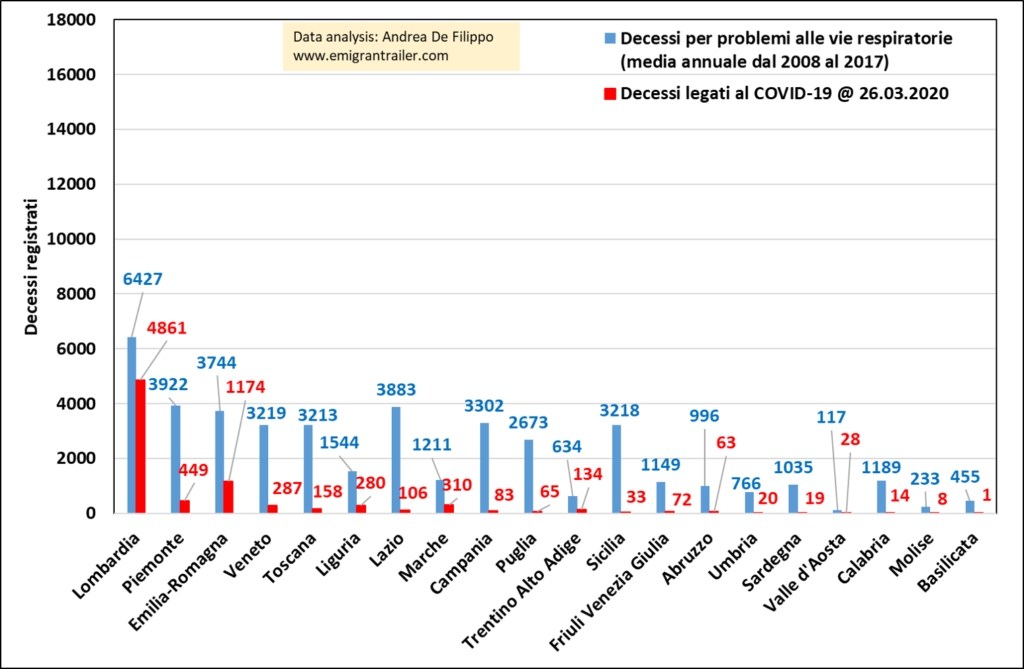
The COVID-19 data refer to the latest data published on 26.03.2020 (COVID-19/schede-riepilogative at master · pcm-dpc/COVID-19 · GitHub).
For the northern regions (Lombardy, Piedmont, Veneto, Emilia Romagna, Liguria) there is a good qualitative correlation, but not quantitative, since Lombardy, Emilia Romagna and Trentino-South Tyrol are well beyond the standard trend provided by the blue bars. This is an important element to explain the exceptional impact that COVID-19 is bringing in these areas.
For the central and southern regions, there is not any correlation, neither qualitative nor quantitative. This could be explained by the fact that the spread of the COVID-19 has been limited and this should also be an advice to adopt as fast as possible all prevention measures in those regions (Lazio, Apulia, Campania and Sicily) where there is yearly a high value of deaths from respiratory diseases.
You can also find here the table (see Table 1) with all documented values, in case anyone desires to deepen this analysis.
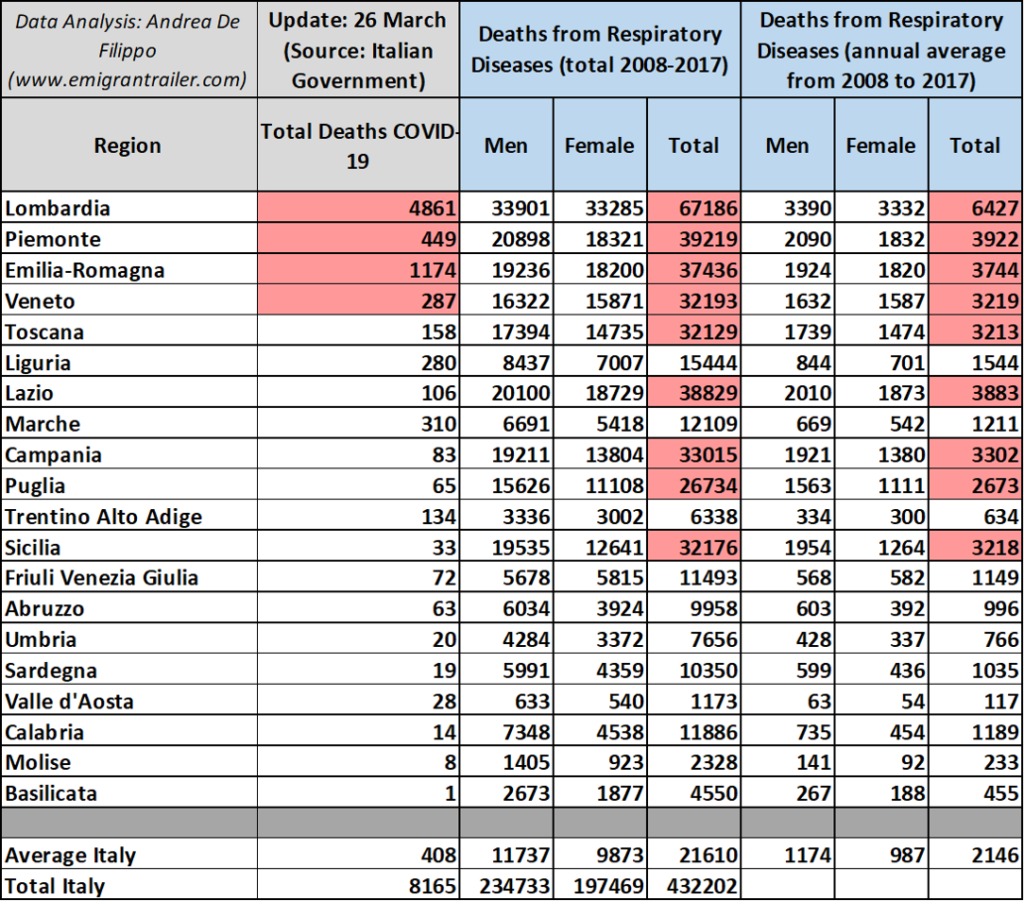
In the table, you can observe that I have added the split for sex (male and female) for the number of deaths from respiratory diseases. This information is particularly important in a context where the deaths for COVID-19 are mainly affecting the male population.
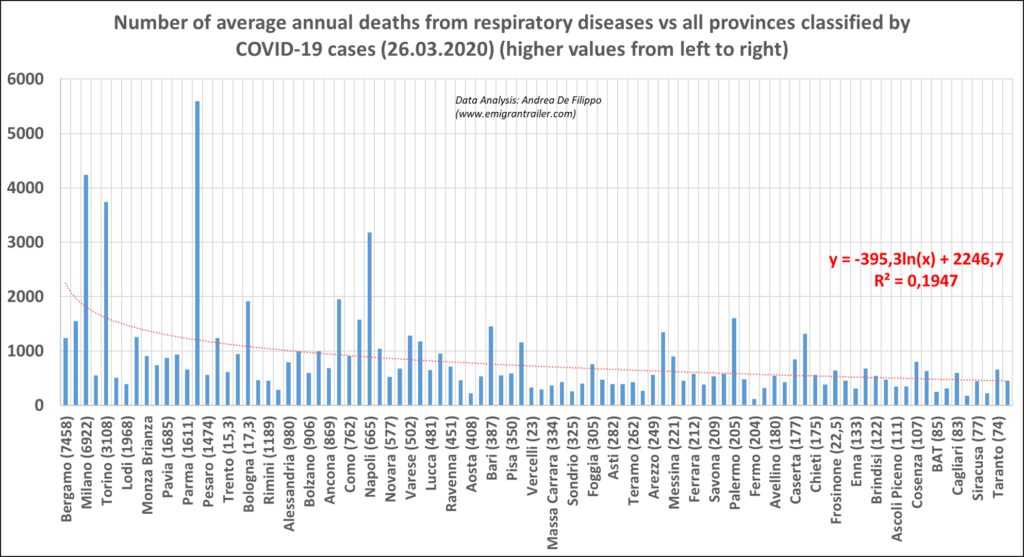
The last consideration is about the situation at local level, for the different provinces (Figure5).
Obviously, as long as we do not have a final and official report of the deaths per provincia, any tentative of analysis is pure speculation. Therefore, the only chart I would like to share is the one where the average annual value of deaths from respiratory diseases is plotted against all Italian provinces, classified for number of COVID-19 cases (not deaths). I have also added a trendline (in red) to underline that there is not a good correlation.
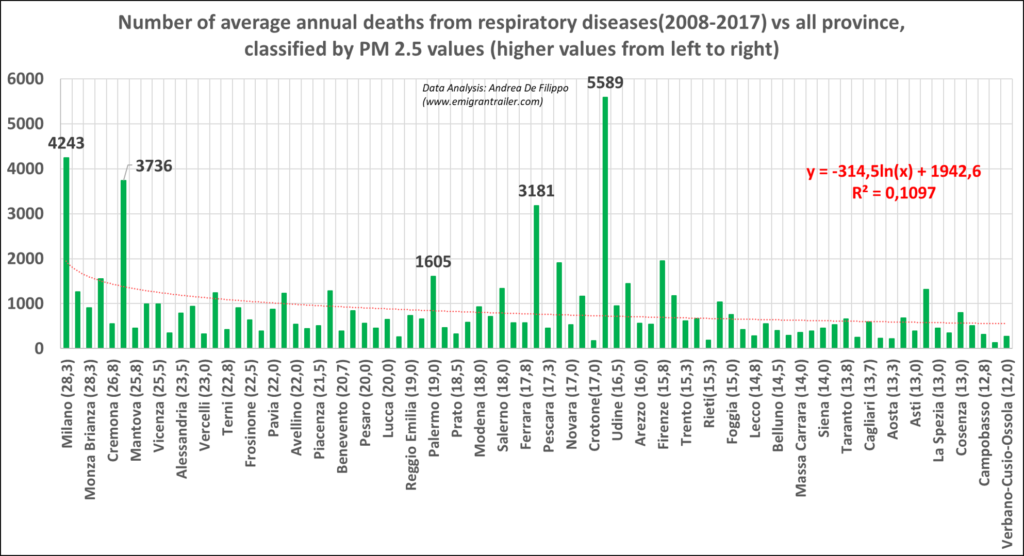
Last but not least, since it was requested, I also add a chart (Figure 6), where the average annual value of deaths from respiratory diseases is plotted against all Italian provinces, classified for PM 2.5 emissions. I have also added a trendline (in red) to underline that, also in this case, there is not a good correlation.
General conclusion
The conclusion of this analysis is that it is true that, in general, there are several annual deaths from respiratory diseases in Italy, but it appears evident the impact of COVID-19 in those regions where the crisis is high. To be more explicit, in a standard situation the ratio of deaths from respiratory diseases between Lombardy and Veneto and between Lombardy and Sicily would be 2:1. In the current situation, the number of deaths linked to COVID-19 produce respectively a 17:1 ratio between Lombardy and Veneto and a 147:1 ratio between Lombardy and Sicily.
Other information and analysis about COVID-19 at the link: COVID-19 (Corona Virus) | EmigranTrailer.
Stay healthy!
Andrea De Filippo


